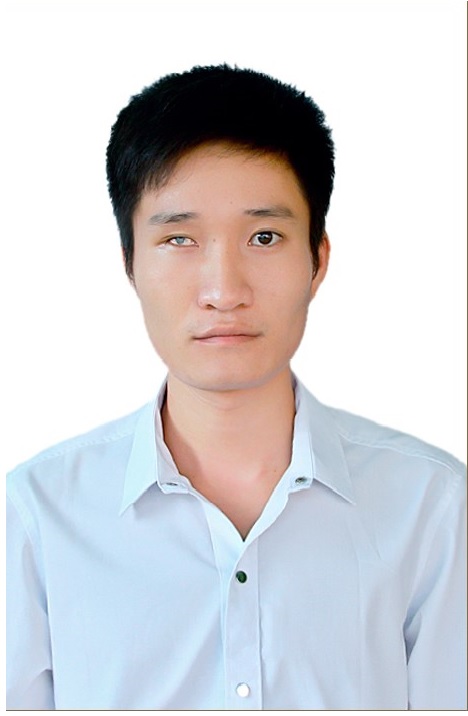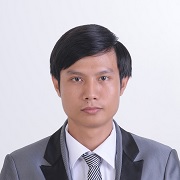2016-17 Manna Food Security Fellows
The Manna Center Program for Food Safety & Security is pleased to announce its 2016-17 Food Security Fellows for research related to issues of Food Safety and Security. We wish you the best of luck with producing important new knowledge in the field!
The Manna Center Program for Food Safety & Security is pleased to announce its 2016-17 Food Security Fellows for research related to issues of Food Safety and Security. We wish you the best of luck with producing important new knowledge in the field!
|
Advisor: Danny Chaimovitz Molecular Biology and Ecology of Plants |
Advisor: Ram Fishman Public Policy |
Advisor: Assaf Distelfeld Molecular Biology and Ecology of Plants |
|
|
Advisor: Yossi Yovel Zoology |
Advisor: Lilach Hadany Molecular Biology and Ecology of Plants |
Advisor: Itay Mayrose Molecular Biology and Ecology of Plants |
Japhette Esther Kembou Tsofack Advisor: Eran Bacharach Cell Research and Immunology |
|
Advisor: Tom Schonberg Neurobiology |
Advisor: Daniel Cohen Public Health |
Advisor: Assaf Distelfeld Molecular Biology and Ecology of Plants |
Advisor: Nir Ohad Molecular Biology and Ecology of Plants |
|
Advisor: Alex Golberg Environmental Studies |
Advisor: Ram Fishman Public Policy |
Advisor: Hillel Fromm Molecular Biology and Ecology of Plants |
Advisor: Yossi Shacham Electrical Engineering |
|
Advisor: Jonathan Belmaker Zoology |
Advisor: Michal Tzur Industrial Engineering |
Tuan Luu Anh
Indole-3-carbinol is a hydrolysis product of indole glucosinolate and is produced in response to tissue rapture. The function of I3C in plant defense to biotic and antibiotic stress is extensively study but the downstream response of I3C in plant is relative uninvestigated. In Arabidopsis, I3C inhibits root elongation and in our lab we later found that I3C act as auxin antagonist. To gain a deeper understanding of the role of I3C in secondary responses in plants, we employed a genetic approach of screening the Arabidopsis Full-length cDNA OverExpression (FOX) library for resistance to I3C. The FOX library seeds was grown vertically in MS media contain 500 uM I3C, after 14 days after germination, seedlings with root lengths longer than wild type were transferred to soil for seed collection. In the first screening, ~200 putative mutant lines were found, those mutant lines is going for second screening for mutant confirmation and characterization.
Shira Bukchin
A model of smallholder agriculture exposure to climate change impacts
Climate change and agriculture development are related processes, and both take place on a global scale. Since most developing countries depend heavily on agriculture, the effects of global warming on their crops threaten their economic development and the welfare of their residents. Despite technological advances, weather is still playing a key factor in agricultural productivity.
Much of the literature in agricultural development and international food security focuses on the impacts of climate changes specifically on smallholders. There seems to be an ongoing commitment to smallholders as a main route for agricultural growth. However, the premise underlying this body of work has not been systematically tested or quantified. Given rapid demographic shifts and urbanization in many developing counties, it remains unclear how many smallholders will experience significant climate change impacts, and to which extent small farmers will be involved in food production when climate change’s major effects come into effect. Though it is generally agreed that investing in agriculture is effective for reducing poverty and hunger, the type or scale of agriculture that should be supported is unclear. By combining spatially disaggregated climate change projections with country level demographic and urbanization projections, we are constructing a global model of smallholder agriculture exposure to climate change impacts, under a range of different scenarios that are calibrated through empirical analysis of several data sets.
This study will provide recommendations regarding future research, and investment of recourses. In addition, this study should contribute to future policy making, regarding smallholders in developing countries.
Jasline Deek
Developing new technologies for the introgression and utilization of genetic diversity from the wild wheat gene pool
Intensive breeding and the replacement of traditional landraces by modern cultivars in recent years has led to the narrowing of genetic basis in cultivated wheat. The most sustainable method for wheat improvement is through the utilization of genetic diversity from the conserved wild gene pools. Aegilops speltoides possess this diversity for providing resistance to leaf rust, a very important biotic stress that limits wheat production globally. However, the exploitation of the wild relatives for wheat improvement is hampered by the presence of the Ph1 gene which precludes recombination between homoeologous chromosomes and therefore increases difficulty of introgressing genes from wild relatives. Traditional methods that exist to suppress Ph1 are time consuming and laborious. The main goal of my research is to develop an efficient methodology for the introgression of disease resistance genes from Ae. spelotides into wheat by using a novel strategy based on the temporary suppression of the Ph1 by the Ae. speltoides Su1-Ph1. At this stage of the project, I have crossed five leaf rust resistant Ae. speltoides accessions (collected in Israel) to durum wheat using both new and traditional methodologies. This will be coupled with the use of a newly developed cloning tool for the targeted cloning of relatively large Ae. speltoides introgressed segments that confer leaf rust resistance. We hope that the integration of the proposed approaches will lead to a more efficient utilization and introgression of the large Ae. speltoides gene reservoir.
Ohad Eisenhandler
The Humanitarian Pickup and Distribution Problem
In recent years, food rescue has become increasingly prevalent in many countries as a means of battling food insecurity. In the course of this operation, perishable products are collected from suppliers in the food industry who are willing to donate it, and then distributed to welfare agencies which serve individuals in need. Notable reasons for the pervasiveness of this phenomenon are the sharp rise in demand for nutritional aid; the growing awareness of suppliers to the benefits they may receive from donating these products; and the growing governmental efforts to encourage such endeavors.
The problem we study focuses on the daily logistic challenges of a food bank, and is inspired by the real-life activity of the Israeli aid organization Latet. The food bank needs to simultaneously determine vehicle routes of limited duration, and allocations of food for each agency that is visited.
Our initial study has focused on a basic variant of the problem, where supply sizes are known in advance, and assuming a single product is distributed using a single vehicle for a single period. For this setting, we have designed an objective function which balances the effectiveness, defined as distributing as much food as possible; with the equity in the allocation of this food among the different agencies. We have shown that this innovative objective function satisfies desired properties of the allocation, while overcoming some of the deficiencies of other measures previously suggested in the literature. We have also developed efficient solution methods for this problem.
Itamar Eliakim
Sonar based autonomous robot for agricultural uses
Israel has 30,00 hectares of palm plantations, 60,00 hectares of vegetable fields, approximately 320,00 hectares of olive orchards and 150,00 hectares of deciduous fruit orchards. Assessment of the expected crop and the amount of fruit in these crops is crucial and a major problem which farmers face every year. Assessment errors might have significant effects on crop collection, storage and packing all of which dramatically influence the financial profit.
Crop assessment is currently performed by manually counting fruit on selected trees - a method which is time consuming and has low accuracy. This inaccuracy in yield assessment, results in unnecessary labor and financial losses that are estimated in many millions of dollars in Israel only. The Agryrobot initiative aims to develop agricultural technology using bio-inspired SONAR. Echolocating bats are able to navigate dense vegetation and classify fruit and foliage using their acoustics and we aim to mimic these abilities. In the project we have already shown an ability to classify different plants and assess the mass of fruit they bear based on bio-SONAR echoes.
My project focuses on the robotic orientation aspects of the Agryrobot initiative. I aim to develop a SONAR based method for robotic- mapping, obstacle avoidance and path planning in a greenhouse or an orchard. This will allow the yield-assessment robot to autonomously navigate in the greenhouse or orchard based on bio-SONAR only. Such an ability is an essential step on the way to developing a fully automatic yield assessment approach which will be far cheaper and more accurate than the all measures which are currently in use.
Yael Gurevich
Dare to be different: evolving a distinctive floral trait maintains plant species diversity by inducing pollinator constancy
Plant diversity is a crucial component in the survival of ecological communities. A major mechanism affecting the maintenance of diversity is plant-pollinator relationship. The relationship between plants and pollinators has fascinated humans since ancient times and has been broadly studied. Plant-pollinator relationship is a mutually beneficial relationship, where the pollinators serve as agents of reproductive success for the plants and are rewarded with food, shelter or possible encounters with mates.
Three-quarters of the global food crops depend at least partly on pollination by animals, with the economic value measuring 9.5% of the world agricultural production. Due to the importance of pollination services to global food security, recent evidence of declines in native pollinator abundance and diversity has generated widespread concern. It is argued by some that domesticated honeybees can fill the gap for the decline of pollinators. Yet, studies show that although honeybees frequently deposit a lot of pollen, they apparently do so inefficiently.
Simultaneously flowering species compete for the attention of their reproductive agents, the pollinators. Naturally, in diverse plant communities rare plants are at greater risk of extinction. To improve odds at long-term survival, rare plants may evolve in a manner that overcomes their competitive disadvantage.
My research will explore the question of floral traits and community structures that may expand the conditions in which plant diversity is maintained by inducing pollinator constancy to certain plant species.
Gal Hyams
Novel methodologies for uncovering novel genetic variation using the Crispr-Cas system
Plant genomes harbor many large gene families of partially overlapping functions, often results in a buffering effect for most single null mutants. In my research I develop a novel computational algorithm, termed CRISPys, to induce mutations at multiple members of a gene family simultaneously. CRISPys is based on the CRISPR-Cas9 system, which is a recent genome editing technique that can be programmed to cause gene silencing at a desired site according to sequence homology. This algorithm harness the low specificity of the CRISPR-Cas9 system for designing the optimal guide RNAs that will target multiple homologous genes.
Results
In vitro: I applied CRISPys on all gene families in the Solanum lycopersicum genome and compared the results to an existing algorithm (MultiTargeter; http://www.multicrispr.net/) that was designed for the same purpose. For each family, CRISPys outperforms MultiTargeter, or gave the same result - when MuliTargeter gave a result that is defined as the best possible result.
In vivo: The CRISPys tool was already used in the labs of Eilon Shani and Adi Avni to target multiple genes in tomato. Preliminary results for a gene family of gibberellin transporters containing seven members demonstrated successful silencing of the entire family using a single sgRNA.
Main conclusions and relevance to Food Security
Harnessing the low specificity of the CRISPR/Cas9 system for causing multiple mutation simultaneously in homologs and paralogs genes can help overcoming the redundancy problem, and may reveal new phenotypes that might have a great agricultural significant.
Future work
The next steps in my project are elaborate the algorithm so it will be able to consider delicate biological features of each specific gene family wanted to be silenced, make an sgRNAs library for the Solanum lycopersicum gene families and make this algorithm accessible to the scientific community via a user friendly web server.
Japhette Esther Kembou Tsofack
Identification and characterization of a Novel Virus lethal to Tilapia
Tilapines global production was recently estimated at 4.5 million metric tons with a current value in excess of $7.5 billion U.S. dollars (USD). This production is also estimated to increase to 7.3 million metric tons by 2030 (according to the United Nations Food and Agriculture Organization of 2014). Additionally, tilapia fish have been proven to be an inexpensive source of dietary protein which serves as a primary protein source in the developing world.
Today, Tilapia global production has to face the challenge of a new viral infection causing massive die-offs of tilapia fish in Israel. Our investigations aim at isolating, characterizing and identifying the causative agent associated with this major threat. Initial results from our research work revealed that these outbreaks can be attributed to a new virus that we named Tilapia Lake virus (TiLV). We were also able to demonstrate that this new virus is also associated with 2 major outbreaks described in Ecuador and Columbia, emphasizing the global character of this new viral threat. Initial results from our investigations were able to establish that TiLV is a negative sense-enveloped-RNA virus belonging to the family of segmented viruses (Orthomyxoviridae), with a genome extraordinarily consisting of 10 segments. Many remains to be understood regarding the biology of this newly emerging viral agent, but considering the role of Tilapia in food security as well as in the improvement of the socio-economic context of populations in the developing world, the next steps of our research therefore include the development of accurate detection and diagnostic methods as a first line of containment measures to this major viral threat. We are also working on developing vaccine strategies based on live-attenuated and inactivated viruses in order to generate vaccine strains which will be used for preventive measures.
Oren Kobo
Changing value of food items through generalization via reinforced dimension
This study utilizes paradigms from the fields of psychology, computational neuroscience and neuroeconomics to investigate construction of value for real food items, and the possibility of increasing the value of targeted items.
The study aims to demonstrate ways to alter the value of items, and the features through which people generalize knowledge. Such ability will have major applications in promoting nutrition goals and support food safety and security (e.g smarter public consumption), by allowing better and more efficient usage of educational resources and by improving our ability to affect real-life behavior of the population.
Using simple paradigms, we train people to allocate attention to a specific feature, and thereby change its relative weight when constructing value. By doing so, we are able to increase people’s subjective value for food items best described by this feature.
In the experiment, we invite participants to a one hour session, divided to several tasks, in a design tailored to demonstrate that with an accessible, simple task we can train people to allocate higher importance to specific features and thus to increase value of healthy products.
The study has high relevance to food safety and security since consumption is determined mainly by subjective value. If we can easily change subjective value, by boosting value through features of our choice, a direct application will be the ability to alter the consumption in accordance with the environment and global needs.
Shubham Mathur
Developments of novel acellular Brucella species conjugate vaccine
Vaccination has proven to be an effective measure against infectious diseases, to combat with zoonotic disease live attenuated vaccines had been deployed with risk of zoonosis. Brucellosis is a zoonotic disease caused by Brucella species. These Bacteria infect land and marine mammals, establishing zoonosis in humans. Brucella species causes abortion storms which establish a key mechanism by which Brucella spread in nature with aborted placenta and fetus membranes. Transmission to humans occurs via contact with infected animal and the consumption of unpasteurized milk and milk products, aerosol transmission has been found as a contagious route of transmission in nature and makes category B Bioweapon. Brucellosis causes sterility, malaise, hepatosplenomegaly, lymphadenopathy, osteoarticular problem, epididymoorchitis, neurobrucellosis, spondlyitis, liver abscesses and endocartis. Virulence factors associated with infection are BvrR/BvrS system which controls polycation resistance, outer membrane proteins, cell invasion and intracellular replication. Vir B cascade is an additional virulence factor that assists in intracellular survival following trafficking to the site of replication. The lipopolysaccharide molecule is a surface antigen in Gram negative bacteria that includes an O-chain polymer at the hydrophilic part of the cell membrane. Several functions have been attributed to this molecule, including cell protection against extracellular penetrating molecules and involvement with host innate immune response. Passive transfer experiments suggest that antibody to Brucella O-polysaccharide possibly contribute to protection via development of B cell and Th1 driven immune response. Here we explored the O –Ps from the LPS with aim to characterize the O – Ps and develop O – Ps conjugate with Chicken Serum albumin and use conjugate as vaccine.
Moran Nave
Unravelling Important Domestication-Related Traits in Tetraploid Wheat
One of the most useful genomic tools for plant breeding and improvement is genome sequencing. We have recently accomplished the full genome sequence of both wild emmer and durum wheat, the parents of a mapping population of 137F9 RILs. My work focus on two majorly important domestication-related traits:
1. Seed dormancy: In wild emmer wheat, only one of the two grains in a spikelet germinates during the first rainy season following maturation. This within-plant variation in seed dormancy is associated with both grain dimension differences and position within the spikelet. I found a major locus on chromosome arm 4BL that explains >40% of the observed variation between wild and domesticated wheat in terms of differential grain dimensions and seed dormancy within spikelets. The domesticated variant of this novel locus on chromosome 4B favors spikelets with equal grain size and uniform germination.
2. Wild wheat possess a natural dispersal mechanisms of brittle rachis, enables the disarticulation and scattering of spikelets upon maturity. A primary component of the domestication syndrome was the acquisition of a non-brittle rachis (Br) trait. I have developed genetic markers for the genes responsible for rachis brittleness in wheat using the recently-published sequences of the two barley orthologous genes. After genotyping a large panel of domesticated and wild wheat I suspect that in wheat the Br story is more complex and there are additional effects on this trait (data is in preparation for publication).
In the coming year(s) I intend to focus on these two traits and with the new genomic tools we now have I believe I can get deeper resolution of the related genes and their function. This knowledge is of major importance in breeding programs aiming to utilize wild relatives to improve modern cultivars.
Vu Hoang Nguyen
Deciphering the Functions of Methyltransferases in Moss Physcomitrella patens
DNA Methylation, the addition of a methyl group on the fifth carbon of cytosine, is an epigenetic mark highly correlates with gene silencing. In plants, DNA methylation is categorized into three distinct contexts: mCG, mCHG and mCHH. During cell division, CG and CHG contexts are conserved by maintenance DNA methyltransferases while CHH methylation is asymmetrically established by de novo methyltransferases and by small interference RNAs (siRNAs). Physcomitrella patens, an early divergent land plant, was chosen for studying evolutional aspects of DNA methylation.
Previous works on P. patens revealed that methylated mCG and mCCG contexts were maintained by PpMET (a homolog of Methyltransferase 1/DNMT1) and mCHG was maintained by PpCMT (a homolog of Chromomethylase family). In addition, PpDNMT3b (a homolog of DNMT3) was reported to de novo methylate CHH contexts but PpDRM (a homolog of DRMs/DNMT3 known to act in the RNA-dependent DNA methylation (RdDM) pathway) in Physcomitrella patens. This research studied on the possible redundancy of methyltransferases by generating double mutant ΔPpmet ΔPpdnmt3b, ΔPpdnmt3b ΔPpcmt, ΔPpmet ΔPpcmt and quadruple mutant ΔPpdnmt3a ΔPpdnmt3b ΔPpdrm1 ΔPpdrm2 lines. Seven ΔPpmet ΔPpdnmt3b plants were generated and two lines (ΔPpmet ΔPpdnmt3b line 38 and ΔPpmet ΔPpdnmt3b line 52) were confirmed with one copy of the construct in genome. All seven ΔPpmet ΔPpdnmt3b lines show similar phenotype with each single mutant ΔPpmet, ΔPpdnmt3b and WT. Transgenic plants of ΔPpdnmt3b ΔPpcmt, ΔPpmet ΔPpcmt and ΔPpdnmt3a ΔPpdnmt3b ΔPpdrm1 ΔPpdrm2 lines could not be generated after three independent transformation experiments of each line. The results suggested that these genes may have overlap roles which were essential for the survival of Physcomitrella patens.
Noam Rosiansky
Modeling of offshore environmental conditions effects on macro algae Ulva biomass growth to secure sustainable food supply for future generations.
In the coming decade, humanity will be facing to a new underestimated food crisis. Since water covers about 70% of earth surface, the solution for this problem may be found in the ocean. A possible, sustainable direction for addressing this challenge is the production of biomass and the conversion of this biomass to the required products through a complex system coined bio refinery. Local Ulva seaweeds which is functional food contain high level of proteins with essential amino acids, high level of minerals like calcium magnesium in zinc , iron. It can give humanity a food safety and security. Macro algae have been harvested throughout the world as a food source and as a commodity for the production of hydrocolloids for centuries.
I would like to explore different areas in the Mediterranean (Epipelagic zones) and find out where it has a high growth potential to establish farms of aquaculture offshore in the Exclusive economic zone to produce macroalgae for food ingredients such as sugars and proteins. Since today it is difficult to decide where to grow macro algae in the Mediterranean, I developed a PBR (photo bioreactors) that simulate totality environmental conditions. Important parameter I should explore for this challenge is sum of macro nutrient N&P, temperature gradient and another case of seasonal change which occur in UTM known points.
Since that off-shore cultivated macro algae, do not compete with food crops for arable land or potable water on the land, can provide an alternative source of biomass for sustainable production of food, and chemicals.
Yoav Rothler
Using scarce water efficiently on large scales: Can Centralized Irrigation Projects Make a Comeback?
Rothler's academic work evaluates an ambitious, potentially groundbreaking irrigation project in the state of Karnataka, India, called the Ramthal project. The project has recently started to provide a reliable supply of irrigation water through fully modernized drip irrigation infrastructure to 12,000 rain-fed cereal-growing farmers spread over 25,000 hectares of land. The Ramthal project also provides local smallholders with trainings by expert agronomists; and organizes farmers into water-user-associations that will be in charge of water pricing and maintenance once the implementers of the project (Jain Irrigation and Netafim) step down.
The Ramthal project has the potential of transforming agricultural development policy in India while shifting thousands of smallholder farmers from seasonal, rain-fed cereal cultivation, mostly for subsistence, to year-long, diversified market oriented cultivation. However, the project will also introduce new types of economic challenges. One challenge is the high costs involved. To justify the investment, farmers will need to realize very large gains in income and productivity; and learn to use the technology effectively. They will also have to work together in groups in order to repair the system when needed, and pay their water bills. These are difficult challenges, but if the project is successful, it will have strong implications on similar investments being considered by other Indian state government and international donors. For this reason, Rothler's evaluation of the project is important from both a research and policy perspectives.
Rotem Shteinshleifer
Controlling Water Use Efficiency and Drought Tolerance through the GTL1- SDD1 Stomatal Density Switch
As part of my M.Sc. study, I engaged in a project which investigates the control of water use efficiency (WUE) and drought tolerance through the GTL1- SDD1 stomatal density switch in tomato plants (Solanum lycopersicum). As demonstrated by Yoo et al. (2010), the Arabidopsis GTL1 transcription factor regulates WUE and drought tolerance by modulating stomatal density via trans-repression of SDD1. They show that in gtl1 loss of function mutants, SDD1 is de-repressed, stomatal development is restricted, and WUE increases (Yoo et al., 2010). When soil water content decreases and drought conditions occur, leaf cellular calcium (Ca2+) signaling prompts binding of Ca2+/calmodulin (Ca2+/CaM) to the GTL1 transcription factor, preventing GTL1 from binding to the SDD1 promoter. This leads to expression of SDD1, and activation of a downstream signaling cascade that restricts stomatal development and enhances WUE and drought tolerance (unpublished results in collaboration with the group of M. Hasegawa, Purdue University, USA).
The aim of this research is to improve our knowledge regarding control of stomatal density under limited water conditions in tomato. For this, my objectives are: (1) to test the paradigm of stomata density control by GTL1 in tomato, and (2) to assess the effect of stomata density on drought tolerance and WUE in tomato. I hope that my research will provide a better understanding of controlling water use efficiency in tomato, and that the knowledge yielded from this study could serve as a basis for crop improvement.
Piyush Srivastav
Soil Sensing And Sensors For Precision Agriculture
Sensing soil for Precision Agriculture has been an area of interest to agricultural soil scientists since the advent of Remote Sensing and Satellite imaging which provided excellent spatial coverage but low resolution to characterize soils’ spatial variability. Also, the measurements were mostly indirect and limited to top 5-6 cm of soil layer. The conventional laboratory based methods of soil sampling and analyses provided detailed information with high resolution but were limited in volume and spatial coverage. These limitations led to the development of various On-the-Go sensors, also known as Proximal Sensors, which are being increasingly used to get a quantitative data of field, important for Precision Agriculture.
Ink-jet printing technology is suitable for flexible electronics. Our study would focus on sensing Nitrogen (its compounds) in soil. The working electrode is proposed to be printed on the polyimide polymer. Nano silver particles would be printed using the Fujifilm Dimatix Ink-Jet printer. This PI-Ag template would provide the conducting path for the charge carriers generated due to the oxidation of the analyte on the sensing surface. Conducting polymers e.g. PEDOT:PSS {poly (3,4-ethylene dioxythiophene:poly-(styrenesufonate)} deposited using the same Ink-jet printer or Polypyrrole (generally, deposited using dip coating) would be optimized as the sensing layer. The sensing of the analyte would be demonstrated by determining its oxidation potential over the conducting polymer using Cyclic-Voltametry technique. The second level of our study would involve the field test of these sensors using the UHF communication channel provided by CartaSense.
Itai van Rijn
Individual-based modeling of trawl fishery in Israeli Mediterranean
Trawl fishery is the main commercial fishing activity in the Israeli Mediterranean. The catch is composed of multiple stocks of local fish species. From the early days of trawling activity, around 1950’, regulation on this fishing method was limited to maintaining the fleet size at around 20 vessels. Lately, concerns were raised regarding over fishing of local stocks. New regulations are being introduced, although a formal stock assessment is unavailable. In my work I first seek to identify the degree in which trawling affects local fish stocks. Secondly, I will try to access the effectivity of the management tools which are being considered. I use novel individual-based modeling approach of both fish and fisherman spatial use, and an explicit modeling of the trawling activity. The model is constructed using various sources of information on fish movement, growth and natural mortality rates. Modeling the fisherman activity considers searching patters of the trawling vessels and the properties of the fishing gear. Initial results suggest that the current fleet size is likely to induce substantial fishing-related mortality on local stocks. The catch rates and population structure which emerge from the model are comparable with existing data on catch and size structure of local fish populations. In a second stage I will use the model to evaluate the effect of temporal closers, gear regulation and fleet size reduction. I predict this modeling approach will provide policy makers with valuable data for a future planning of sustainable fishing scheme.















